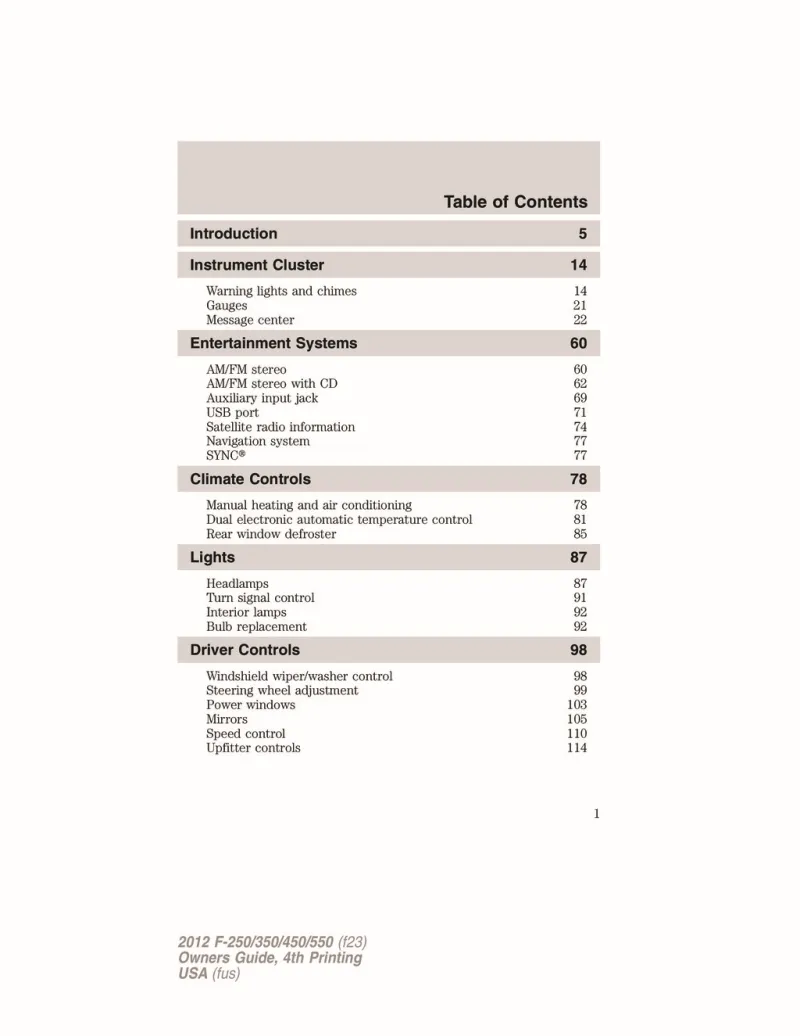2012 Ford F550 Owner's Manual

Table of Contents
2012 Ford F550 Overview
Introduction
The 2012 Ford F550 is a robust and formidable contender in the heavy-duty truck segment, designed specifically for those who demand uncompromising power and versatility in their vehicle. Ideal for commercial purposes, construction sites, and heavy towing tasks, the F550 combines comfort with functionality, ensuring that it meets the needs of both professionals and everyday drivers alike.
Powertrains
The 2012 Ford F550 is equipped with impressive powertrains that deliver outstanding performance. It features a standard 6.8L V10 gasoline engine producing 362 horsepower and 457 lb-ft of torque. For those seeking even more potency, the optional 6.7L Power Stroke turbocharged diesel V8 engine is available, generating an astounding 400 horsepower and 800 lb-ft of torque. Both engines are paired with a smooth-shifting TorqShift 6-speed automatic transmission, providing a seamless driving experience and exceptional towing capacities.
Trims
The F550 is offered in various trims, providing choices that cater to different needs and preferences. The base XL trim offers essential features for practical use, while the XLT trim adds additional comfort and convenience with enhancements such as upgraded interior materials, an advanced sound system, and optional technology packages. For those wanting luxury paired with utility, the Lariat trim includes leather seating and advanced infotainment options, making it suitable for both work and leisure.
Features
In terms of features, the 2012 Ford F550 does not disappoint. The truck includes modern amenities such as Bluetooth connectivity, a rearview camera, and a navigation system. Safety features like antilock brakes, stability control, and multiple airbags are standard, ensuring peace of mind while driving. Additionally, the spacious cabin provides ample legroom, making long journeys comfortable for both driver and passengers.
Owner's Manual
The Owner's Manual for the 2012 Ford F550 is an essential resource for new owners. It contains detailed information on vehicle specifications, maintenance schedules, and troubleshooting guides to help ensure longevity and peak performance of the truck. Clear diagrams and instructions make it easy to understand how to operate the numerous features and systems integrated into this powerhouse, allowing owners to maximize their investment.
User manual download
The Ford F550 owner manual for the 2012 model year is to be found in PDF downloadable format on this page. The owner manual for the model year 2012 is free and in English, but the repair manuals are usually not easy to get and may cost more.
Manual Questions
Fill the form below and someone will help you!
